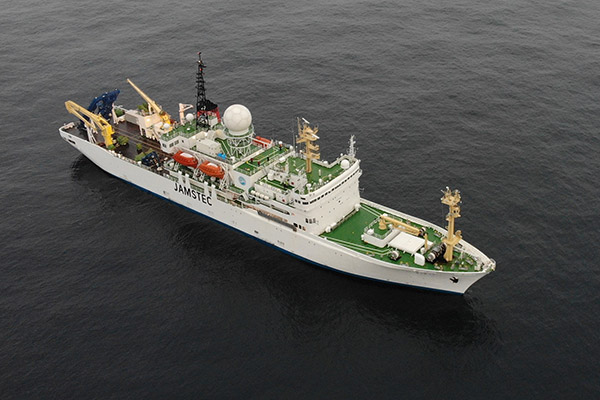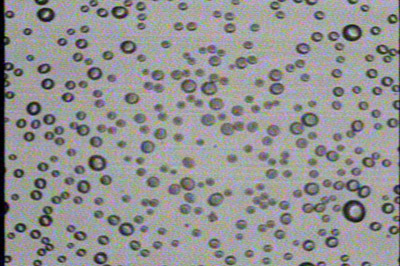National Institute of Polar Research
Arctic Ocean Expedition Advances Climate Modeling
New research from Japan’s National Institute of Polar Research, based on in-situ weather data collected over the Chukchi Sea, investigates discrepancies between regional climate models to improve Arctic forecasting
January 27, 2021
As the climate warms and Arctic sea ice retreats, research vessels and commercial ships are sailing into the Arctic Ocean more and more, but the accuracy and sensitivity of regional weather and marine forecasts for these hazardous waters still lag well behind those of their lower-latitude counterparts, with significant differences between regional models. Direct measurements of atmospheric conditions, such as cloud cover and solar radiation, can help to evaluate and improve these models.
In a new study published in the Journal of Geophysical Research: Atmospheres, a research team led by the National Institute of Polar Research in Tachikawa, Japan tackled this problem using data collected by the ice-strengthened Japanese Research Vessel Mirai in 2014.

The RV Mirai sailing on the ice-free Arctic Ocean on October 2019. Credit: Jun Inoue (NIPR)
“We conducted stationary point observations with comprehensive observing instruments over the ice-free Chukchi Sea in the Arctic Ocean in September 2014, a period of transition from the melting season to the freezing season. This approach provided an ideal opportunity to examine model representations of clouds, solar radiation, and the surface heat budget during this period,” says first author and leader of the cruise, Jun Inoue, who proposed the strategic operation setup used in this study.
Six state-of-the-art regional climate models (with nine different model runs) were selected for investigation using these observational data, with the aim of examining interactions between clouds and radiation, as well as the sea surface energy budget. Most of the models adequately captured near-surface meteorological parameters, but some targets for further improvement were identified. One notable finding was that most of the models tended to fail to capture the vertical structure of clouds over the Arctic Ocean, especially unstable low-level stratification.
“We found extensive differences between models in the partitioning between ice clouds and liquid clouds, which resulted in large discrepancies in the sea surface heat budget. What this reveals about the models is that most of their cloud microphysics schemes should be improved based on the observation that supercooled liquid clouds are maintained even in low-temperature environments below -20°C,” says Inoue.

Supercooled liquid cloud droplets in the lower troposphere over the ice-free Arctic Ocean obtained by a HYdrometer VIdeo Sonde (HYVIS) observation on 22nd September 2014. Credit: Jun Inoue (NIPR)
Accurate atmospheric and coupled air–ice–sea climate models are indispensable for understanding the evolution of the Arctic region as global climate change progresses. The findings of this study based on measurements taken over the ice-free Arctic Ocean will help to improve these models and the forecasts they produce. Additional research expeditions into the Arctic to collect observational data will further advance these ongoing efforts.
The article, “Clouds and radiation processes in regional climate models evaluated using observations over the ice‐free Arctic Ocean,” was published in the Journal of Geophysical Research: Atmospheres (DOI: 10.1029/2020JD033904).
Original article:
Journal: Journal of Geophysical Research: Atmospheres
Title: Clouds and Radiation Processes in Regional Climate Models Evaluated Using Observations Over the Ice-free Arctic Ocean
Authors:
Jun Inoue (National Institute of Polar Research, Japan)
Kazutoshi Sato (Kitami Institute of Technology, Japan)
Annette Rinke (Alfred Wegener Institute, Germany)
John J. Cassano (University of Colorado Boulder, USA)
Xavier Fettweis (University of Liége, Belgium)
Günther Heinemann (University of Trier, Germany)
Heidrun Matthes (Alfred Wegener Institute, Germany)
Andrew Orr (British Antarctic Survey, UK)
Tony Phillips (British Antarctic Survey, UK)
Mark Seefeldt (University of Colorado Boulder, USA)
Amy Solomon (University of Colorado Boulder/NOAA Earth System Research Laboratory, USA)
Stuart Webster (Met Office, UK)
DOI: 10.1029/2020JD033904
URL: https://agupubs.onlinelibrary.wiley.com/doi/10.1029/2020JD033904y
First Published Online: December 10, 2020
Issue Online: December 29, 2020
Funding:
JSPS KAKENHI (JP24241009, JP18H03745, JP18KK0292), ArCS (Arctic Challenge for Sustainability), Bundesministerium für Bildung und Forschung (03F0776D, 03F0831C), Deutsche Forschungsgemeinschaft (268020496 TRR 172), DOE, Office of Science (HiLAT-RASM project)








